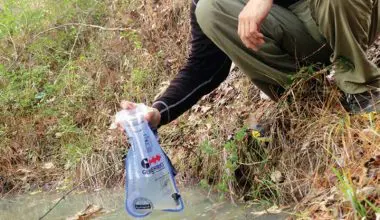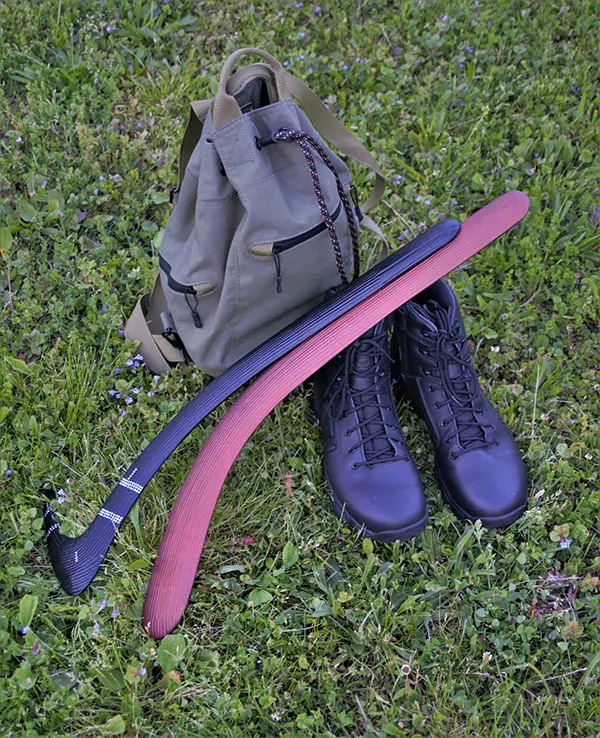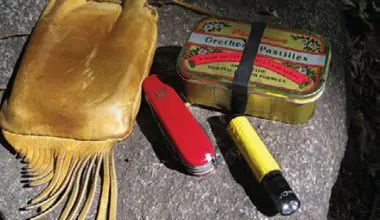When food supplies have been designed and manufactured for long-term storage and have been stored right, their usable life may be longer than most people suppose.
I have eaten Civil Defense survival biscuits (the ones that looked like po’ boy graham crackers) that were more than 40 years old. They tasted a little flat, and although they were not the best thing I’ve ever eaten, they were the best thing I had to eat at the time—and for them I was thankful.
In the Army in the early 1960s, every Thursday cooks would cycle through a dinner’s worth of WWII canned rations, and nobody ever got sick. Well, they might have if they hadn’t opted to eat at the snack bar or in town on Thursdays, but you get the idea: the WWII “rats” were still edible.
In Germany, we also had one day a week of WWII rats, and in the field ate only C-rats. These antique Cs had packs of smokes, including Lucky Strike Greens [“Lucky Strike Has Gone To War”] that would burn your finger on the second drag and mostly got traded to Comrade for wurst and beer. But even though this chow was older than many of the troops who eventually got hungry enough to eat those ham-and-limas, it was still wholesome. And this was before the days of nuking rations for longterm storage.
Probably the most important consideration was that it had been stored under optimal conditions. And of those conditions, the most important is the legendary “cool, dark place.”
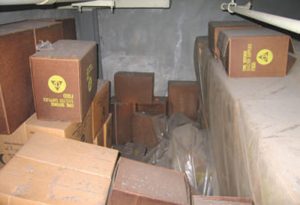
Today’s rations are superior to those WWII supplies in selection and preservation technique, but we should always take the same storage care with our private food reserves. Because “fresh” is preferable to “edible,” it really pays to properly store and conscientiously rotate our shelf-stable groceries. A good rule is to store what you will eat, and to eat what you store and regularly replenish it with fresh.
I wonder how many of us have a pile or two of expensive “survival” rations with the bands still on them, having long since forgotten just what is there— and of equal importance, what is not. I have seen survival stashes on skids in a garage, the contents of which were better known to seedy neighbors than to the owner.
All it takes to keep food reserves wholesome and accessible, if we’ll do it, are planning, a little organization, stock rotation, and a running inventory (two copies, dontchaknow…). We’ll confess to being a prime slacker, but let’s see what we can learn from friends who do it better.
Table of Contents
SAFE, SECURE, ORGANIZED, ACCESSIBLE—AND DISPERSED
“Accessible and dispersed” are not mutually exclusive principles. They are an important aspect of “safe, secure and organized.” Supplies need to be accessible to your family, and only your family, for systematic rotation across your dinner table and replacement, and for their primary purpose as emergency provisions.
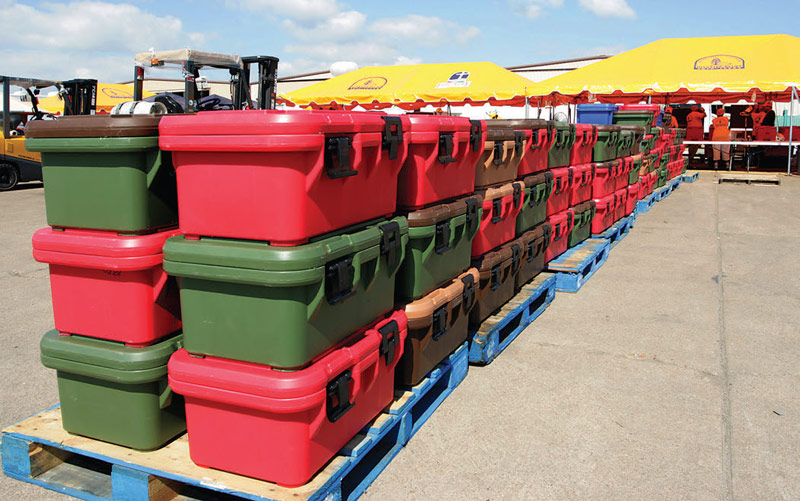
“Safe and secure” means to protect stocks from climatic considerations such as freezing or heat, which affect quality and longevity, and from worstcase environmental calamities like fire and flood. “Organized” is an obvious observation, because not even a tool box or woodpile works without a plan.
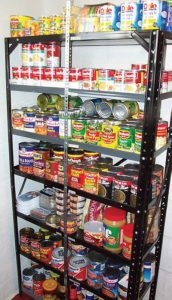
Depending on where you live and with whom you share the area, stores may have to be protected not only from environmental storage loss, but also from insects, thieves, vandals and other rodents. Prevention is the best cure for all these. It just makes sense that you would not tell anybody about your survival groceries, unless you plan to share with them.
Sharing with the less fortunate (as opposed to the indolent) is a good idea, but it may be better to lay in separate, overt chow for your public food bank. When things get ugly, some people get ugly as well, and their idea of sharing is to take whatever they know you have. Just ask the Little Red Hen. Or the Ant and the Grasshopper. Or today’s Work-Ethic Germans, surrounded by neighbors sitting in the shade with their hands out.
Easy and discreet accessibility is important in times of foul weather, flood or civil disorder, and dispersal and accessibility go hand-in-hand. If you have a plan and place to go to, you may want part of your contingency rations as a “go-pack,” and for this, light freezedried rations get extra points. Food that is accessible as modules of grab-and-go groceries should be well-rounded, containing all fractions of whichever food pyramid you favor. This accessibility is also a lynchpin for efficient rotation, because if it’s not easy, rotation may not happen. First in, first out: store what you eat, eat what you store.
It’s unlikely your food reserves will be nationalized by Executive Order and whisked away in black helicopters, unless you are Con-Agra. Your more likely loss would be through neglect, nonchalance, spoilage and vermin. Whatever your anticipated loss, it’s sensible not to put all your eggs—or canned, freezedried, nitrogen-packed groceries—in one basket.
SHED NO TIERS
The first tier is a good supply of everyday groceries, right on the pantry shelf for everyday use, and plenty of them, to get you through long winter storms and/or into the next harvest season. Unless (alas) this is all you have put by, there is no need to disperse this immediate larder except as a hole card against vermin or unless you keep it all in a basement that might flood. This tier would comprise normal pantry shelves of home canned, frozen foods with backup power supply, or root veggies still in the ground.
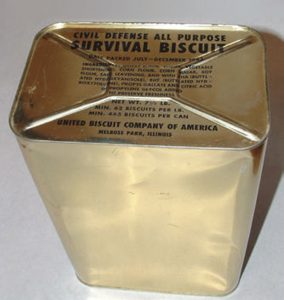
Second tier items are commercially canned or packed goods. Store items subject to rodent or insect attack—peas, beans, flour and pasta, powdered milk, etc—in large glass or metal containers, in original packaging. Different canned commodities have different best-by dates, most at least a year. As most are illegibly machine printed, use a permanent marker to rewrite dates atop the can. Organize shelves by commodity, always placing new stock in back and old stock in front. If earthquakes are a possibility in your area, protect glass from falling or having something fall on it.
A logical third tier comprises nuked, freeze-dried, or nitrogen-packed foods designed for unmolested storage of up to 25 years. Even these, however, are not for indefinite storage and eventually need rotating, so written inventory is important. Record what/where things are and their expiry dates—a copy with the cache and a copy in your files.
STORAGE OPTIONS AND IDEAS
Using multiple storage options will help your dispersal plan. Just like real estate, dispersed storage is a matter of location, location, location. We have noted characteristics of a good location, secure from natural and manmade problems, but selection is an individual thing, and takes thought. The best spots are very private. Private and hidden are even better. Hidden and securable without being obvious are better yet.
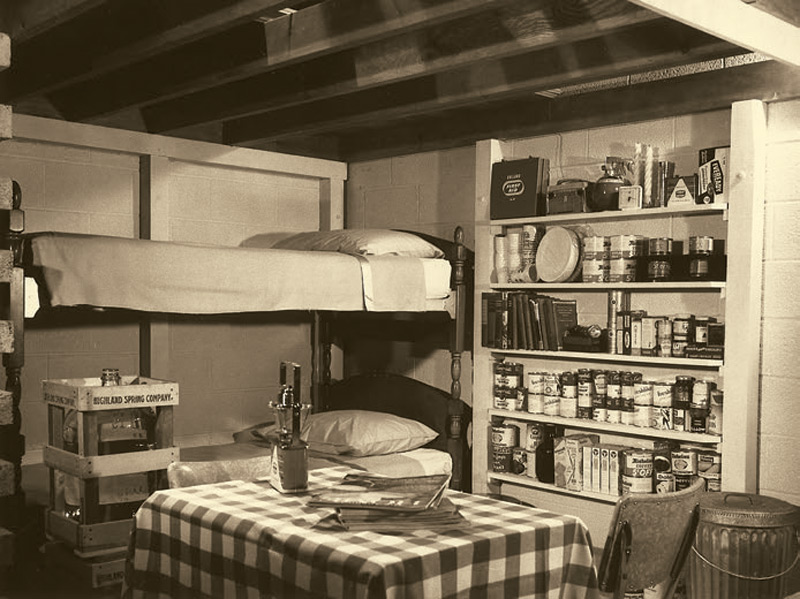
Alas, this was not my cache, but I helped a friend build secure, accessible 6′ x 6′ storage in the clay bank behind his woodshed, of cinderblock and waterproofed. He keeps good records, only has to move the camouflage woodpile and fireproofing to rotate tubs every few years, to a similar stock in his basement. A woodshed is naturally located on dry ground. He keeps similar stocks on a remote property.
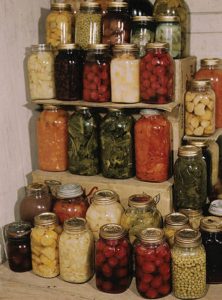
Even in his woodshed cache, everything is in original containers and off the floor. A firefighter by profession, his cache is designed to survive the woodshed burning down, but the usual consideration is that if your house goes, a separate stash location might be unscathed. Any outbuilding may be a candidate if the stash can be camouflaged or secured. His house basement has sturdy shelving that is organized and visible. He carries a three-day supply in each vehicle, water and purification tabs, plus good tools and space blankets.
When someone remarks on the rotational supplies he’s eating out of his basement, he just laughs, “Yeah, the Russians never came, so we’re eating this up, the price of food these days.” (Wink, wink, nudge, nudge.) I could learn a lot from him, as he’s very lowkey but has it together—and he never wears cammies to the store.
A PROCUREMENT PLAN
Compared to the minimalist survival crackers of yesteryear, today there are unlimited choices in high-quality storage food, some already prepared, neargourmet quality. It commonly has a shelf life of from 15 to 25 years, with no rotation required during that period. This really makes rotation easy, because it could be up to a 25-year cycle.
Think about it: not just heirloom tomato seeds, but actual heirloom groceries you can put by today that could feed your starving grandkids a quarter century from now in a post-apocalypse scenario. Newer methods of packing give a superior product, longer shelf life, longer-lasting nutritional value, greater selection, and handiness an order of magnitude better than some older supplies. It’s now in nitrogen, in Mylar bags or #10 cans, or in handy synthetic tubs that can be partially used without affecting the rest. These tubs stack well, have grab-and-go handles, protect from the elements, and even float.
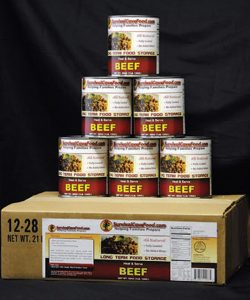
Food comes as a single commodity, a variety pack, or even organized as a thoughtful small assortment. You will pay for the convenience, but in specific instances, it’s worth it.
Our competitive free-enterprise system has brought to market a full spectrum of long-term storage food and accessories—and long-term foodstorage hucksters.
Specifications vary, quality varies, and price varies dramatically. Comparison shop the whole of what’s available before you spend a dime. Once you jump into the arena and see the variance in what you can get for your money, you can easily sort it out, and will be glad you did.
The road to an empty lunch pail is paved with good intentions. We can’t eat what we didn’t store, and we can’t store what we don’t have. And we won’t have what we just think about.
If you don’t know where to start, try going to a big box store and dedicating a week’s grocery budget only to food with a shelf life of more than a year: canned meat, fish and veggies on sale, beans and rice, canned/powdered milk, vitamins. Shop wisely—take a calculator and get the absolute most for your buck.
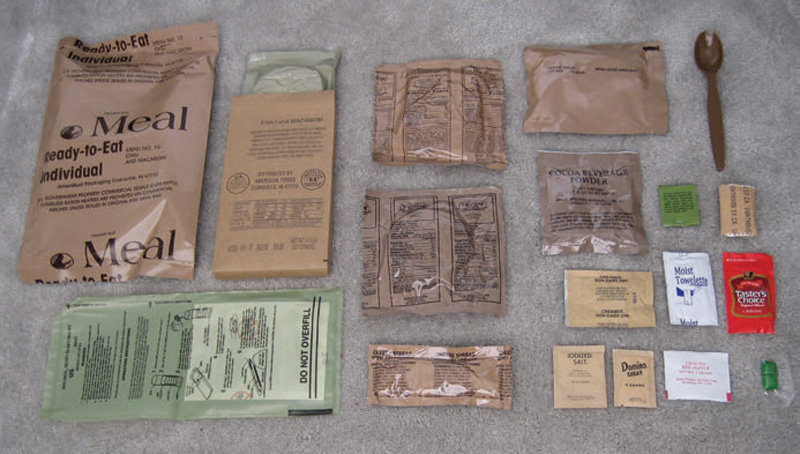
Put small bags of beans, peas and rice in clean mayo and peanut butter jars and put ’em on the shelf. Organize this dedicated food on a dedicated shelf in your larder. Consider this seminal stash as sacrosanct. Regard this fledgling cache as a just-planted seed that you want to grow to produce some security in your grocery department.
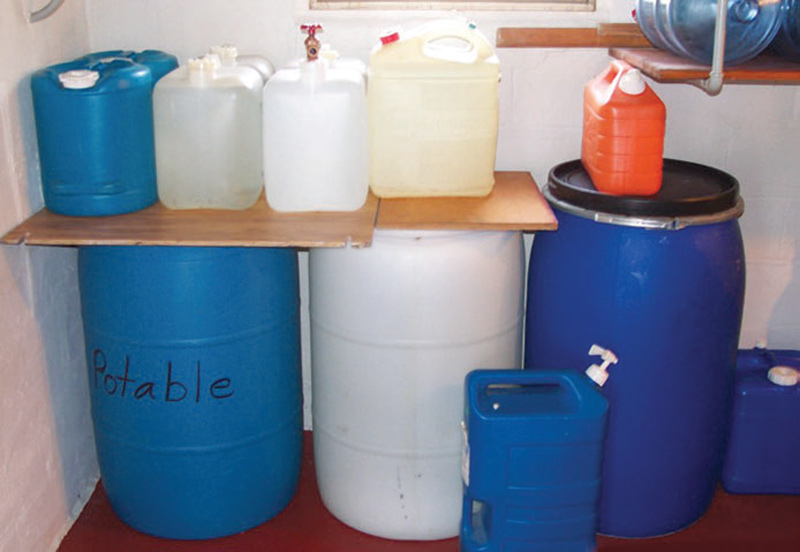
A can of tuna has a best-by window of four years, salmon five years, Spamtype products and canned chili two years, canned veggies and soups from one to three years, dry legumes and grains many, many years—and they’re cheap. (Note: “best by” is not an expiry date.)
In comparison, for the cost of one large take-out pizza that will give me heartburn, I can buy half a dozen cans of sockeye salmon good for five years, or almost 24 cans of tuna good for four years.
Once this wee larder is started, never draw and use the old stock unless you replace it with fresh. Continually enlarge and upgrade—as a habitual, priority activity—and add dedicated long-term freeze-dried and/or nitrogen-packed supplies as you are able. With the latter, you will probably find that your prudently spent dollars go farther on basic commodities than on luxury prepared meals.
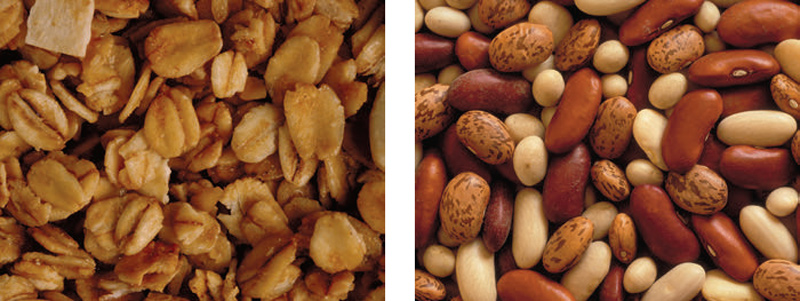
Once you see how easy this is and how with thrifty shopping you can get long-term storage food for not much more than grocery-store prices, you can round out your long-term larder with luxury foods, varietal foods, and handy foods as you become an expert shopper. Some things never get cheap, like MREs. They’re handy for a bug-out bag, but as cost-effective long-term supplies, they’re well behind basic freezedried commodities.
LET’S GIT ’ER DONE!
There are two crucially important things to do. First, start building an emergency food supply on your next trip to the store. Why not today?
The second and equally important thing is to make and keep it organized so it is accessible, wholesome and safe. Why not stay organized as you unload the groceries today?
Americans have been materially blessed in the last century, and we’ve become a nation of collectors: stamps, antiques, baseball cards, marbles, and myriad items that are hard to chew, totally without nutrition, and won’t even be useful trade goods.
Guns, ammo, hand tools, and silver coins are cited as good exchange items in a gloom-and-doom scenario, being compact and universally valuable.
Personally, my cold, dead fingers are just as likely to be found wrapped around a can of Alaska Sockeye Salmon.

